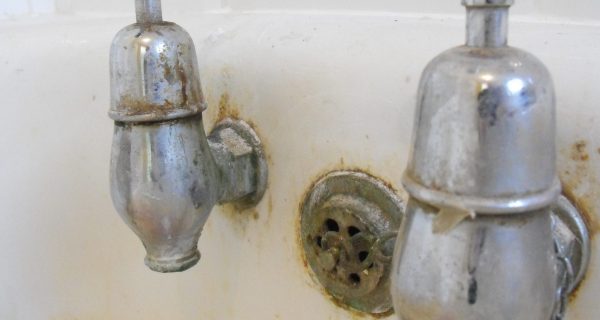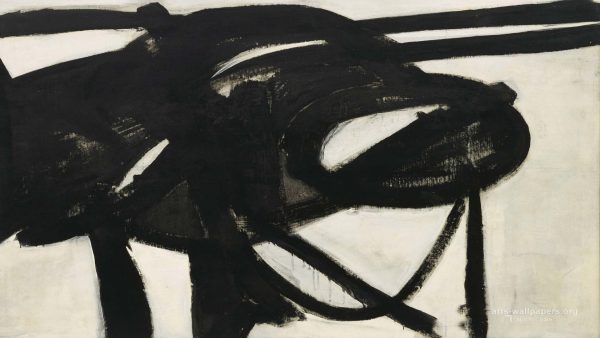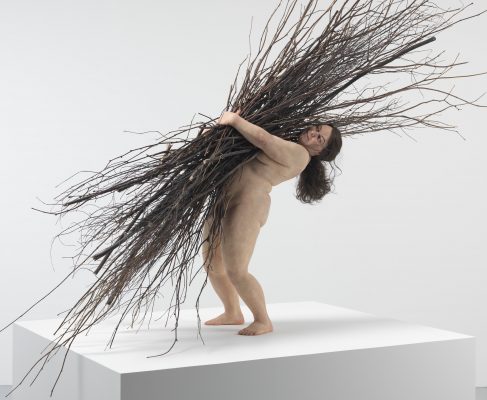I.
This spring, in cities and towns all over the United States, schools, churches and other organisations will hold daddy-daughter dances. The daddies will dress up in suits and ties and the little girls will dress up in their finest Sunday dresses. The mommies, presumably, will style their little girls’ hair, and patent leather shoes and pearls will be applied, and all of these scenes, playing out in kitchens, moving on to hotel ballrooms and school auditoriums and church cafeterias, will be adorable.
They will also, even as they fly under the radar as being such, be profoundly heteronormative.
We can put this heteronormativity through a prism that reflects two views. One way of looking at it is according to the traditional definition of heteronormativity: a cultural bias in favour of opposite-gendered sexual and marital relationships, ‘a world view’, as the dictionary suggests, ‘that promotes heterosexuality as the normal or preferred sexual orientation.’ Under this definition, these dances necessarily exclude families of two mommies. They force families of two daddies to make a Styronian decision about which parent should attend.
A more expansive understanding, however, accounts for the work of Michael Warner, the social theorist who coined the term. According to his understanding, heteronormativity undergirds all sorts of social and economic structures with the pervasive and exclusionary belief that people fall into distinct yet complementary gender roles, an assumption which carries several implications for the nuclear family and for society at large. These range from the tax structures that reward the married two-parent family to the idea that mothers, not fathers, should lead Girl Scout troops. And under this definition, one can easily see the ways in which the daddy-daughter dances, and all those adorable scenes playing out in kitchens and church basements and school auditoriums, also exclude families led by single parents. One could, of course, in the absence of an actual daddy, ask a male adult friend to fill in. A single mother might ask her own father to accompany her child. But excepting such arrangements, which often depend on forced and even staged interpretations, the scene of the daddy-daughter dance, so charming at surface level, is such for only a small percentage of its attendees.
II.
Heteronormativity, of course, impacts people in different ways depending on their gender, their marital status and their sexual orientation, and this is true whichever way one looks through the prism. There is no pretending that a two-parent family headed by a gay or lesbian couple has access to the same nuclear-family privilege as a two-parent heterosexual family. That being said, the heterosexual single parent, particularly if she is a woman, is subject to a similar sort of heteronormative bias, because she has unleashed herself from society’s dictates regarding complementary gender roles. A female single parent, according to the mass media, should want a man in her life, should be actively seeking a man in her life. If she does not and is not, she is a threat. She is a threat to a presumed order, the societal order that dictates that male influence is a necessary part of parenting.
Heteronormativity, and its pounding insistence that the correct and proper nuclear family consists of two parents, swims against the tsunamic change that the modern family structure has seen in the last fifty years. According to the last United States Census, taken in 2010, there were 13.7 million single parents in the United States raising 22 million children. The vast majority — 82.2 per cent — of these single parents are women, which means that much of the heteronormative outcry against single parenthood involves a good healthy dose of sexism. Spend one week watching mainstream media in the United States and you’ll easily gather that single mothers are ruining society. The media, however, reports no corresponding ‘single dad’ problem, even as those households see an increase in number: single fathers, according to mainstream media, are heroes. Saviours. A single dad puts his daughter’s hair in a mermaid braid and the video of him doing so goes viral.
The valour of single fathers notwithstanding, parental number status is one of the last personal axes that is acceptably open for discrimination. While hateful rhetoric against people based on race, gender, religion, ethnicity, sexual orientation or disability status is widely censured in the West, attacks on single parents come from both the right and the left sides of the political spectrum. Society accepts almost as fact the gambit that the single-parent home is inferior to the two-parent home: Republican Ted Cruz, during his now-famous 2013 Senate filibuster against universal healthcare, invoked the spectre of ‘the struggling single mom… waitressing in a diner’ and thus dependent on government benefits.
This trope is, of course, the mythical creation of a patriarchy that feels its relevance disappearing. According to the Census Bureau, only 30 per cent of single mothers live below the federal poverty line: that’s an awful lot of us who are doing just fine. But Republicans love to trot out the myth of the sad, government-dependent single mother: in 2015, Ron Johnson, another United States Senator, urged the hypothetical single mother to ‘increase her take-home pay’ by finding ‘someone to support her’. In perhaps one of its ugliest manifestations, the myth trots itself out when teens and young adults in the United States perpetrate gun violence, with pundits and commentators decrying the breakdown of the American family, even though Mother Jones reports that almost two-thirds of mass shooters were raised in two-parent homes.
The political left, alas, does not exactly embrace single parenting ether, though its rhetoric is softer and more subtle. ‘Let’s face it,’ said President Obama, during his 2012 campaign for reelection, ‘a mixed kid from Hawaii born to a single mom is not likely to become president of the United States.’ The stereotype has been allowed to mask the facts: George Washington, the very first president of the United States, was raised by a single mother after his father died when he was eleven. Andrew Jackson’s father died before the seventh president was even born. Bill Clinton? Thomas Jefferson? Both raised by single mothers.
This prevailing rhetoric, of single parenting as suboptimal lifestyle choice, is far from benign. It informs public opinion and worse, it informs public policy. It moulds a country where discrimination based on parental number status is perfectly acceptable. In the middle of my divorce, I decided to take my biracial daughter out of her small private school and move her to a public school district that was the most diverse in town. I looked, then, to rent a duplex in the district, on an attractive street of duplexes I’d seen near the school itself. The landlord showed me the unit but rejected my application. I asked why. I had perfect credit, I told him. A job teaching at the university. ‘I don’t rent to single-income families,’ he replied.
I was stunned. I called the Illinois Human Rights Commission and learned that this was perfectly legal, and my shock turned to rage. I was paying more in rent in my current duplex than this landlord was asking. I’d just received an advance from my publisher that could have paid the entire year’s worth of rent. But I was a ‘single-income family’. To this man, my finances weren’t even worth further interrogation.
III.
I did not grow up, not really, in a two-parent household. My own parents separated the first time when I was a toddler, and then remarried each other when I was a ten-year-old. The eight years during which I was raised by a single parent were my more formative years; they were years of peace, years of idyll. My mother had a very singular vision for my childhood — she wanted academic excellence first and foremost. Her most potent desire was for me to be the valedictorian of my high school. I took it a bit further, and was accepted into Harvard at the age of sixteen.
This wouldn’t have happened had I been raised in the two-parent household in which I began life. My mother, a rather bohemian high school English teacher, and my father, a rather uptight sales executive at General Electric, were ill-suited for each other. Their remarriage, when I was ten, and their subsequent divorce, over a decade later, were marked by the kind of violent nastiness I do not like to recall even through words on paper. Conflict was a norm in my two-parent home; beneath the surface of even the best days in my two-parent family, there was tension. When I arrived home from the prom, I opened my front door to find clothes that had been thrown, in a rage, all around the foyer; I shut the door on the whole scene and bid my date goodnight on the front steps. My parents’ ideas of parenting were quite different, even when my sister and I were small children; there was very little unified vision about things like bedtime or piano lessons or grade skipping. Though I would come to love my parents again, post-divorce, as people who found the most happiness in being single, I remember the years in which they were my married parents as some of my most miserable.
My children, similarly, would tell you that they did not know much enduring calm when I was married to their father. They endured much screaming, much throwing of objects. They endured a household where their two parents had radically differing views on parenting. Now that their father and I are divorced, they have two different households to turn to, two different sets of rules about life, two wholly different world views, one no less valuable than the other. That my ex-husband and I need not attempt to make these opposing views of parenting coalesce is critical to our children’s well-being. Indeed, as fellow single mother and writer Rene Denfeld recently told me, ‘There are times when sole parenting is optimal. Not second best: optimal. And no one wants to admit it.’
Yet even as my children test into the gifted programme, perform well in their extracurricular activities, and grow into kind, loving, elegant young women, my home is judged inferior. Mia Birdsong and Nicole Rodgers, in their essay ‘Another One Percent White Privilege’, refer to this experience as ‘nuclear parent privilege’. ‘We live in a country,’ they write, ‘where this increasingly uncommon family arrangement gets respect and support that is denied to the rest of us.’ Birdsong and Rodgers point to tax breaks and employment policies, medical care and media representation, and the bipartisan political focus on an agenda of ‘removing the barriers to marriage’. At one end of the spectrum are HMRIs (Healthy Marriage and Relationship Initiatives), including a federal HMRI administered through the Department of Health and Human Services to the tune of $150 million. At the other end are programmes like Retrouvaille, run by the Catholic Church, which casually informs participants that the four stages of marriage include ‘disillusionment’ and ‘misery’. Retrouvaille is silent about marital issues such as domestic violence: according to its website, all marriages are eligible for ‘renewal’. Both the HMRIs and Retrouvaille are illustrative of the presumption to which Birdsong and Rodgers allude: that marriage is beneficial, no matter what its circumstances are. ‘Because we are blind to the ways in which our society benefits nuclear families,’ they write, ‘when they thrive, we believe it is because there is something intrinsically better about them.’
Indeed, the gap in wealth and employment between the single-mother-led household and the single-father-led household is but one tell-tale sign that structural inequality, rather than family structure itself, is responsible for any statistical difference in outcome between children parented in two-parent versus single-parent families. While 76 per cent of custodial single mothers are gainfully employed according to those 2010 Census statistics, more than 85 per cent of custodial single fathers are. And while 30 per cent of single mothers live below the poverty line, as we know, only 18 per cent of single fathers do. This has little to do with family structure and everything to do with gender discrimination and a glaring lack of pay equity in the United States.
I feel fortunate to have grown up in a mostly single-parent home. The benefits of my mother’s sole parenting were enormous. More than that, I feel fortunate because I never quite received the message that society has tried to pound into me as an adult: that a family structure in which a majority of women will find themselves at some point during their parenting is somehow inferior. Now that I’m a single parent myself, I can happily and easily celebrate what other people discourage. I can understand the absolute advantages of my situation and see it clearly, unfettered by disapproving societal views.
And so one returns to the adorable scene of the daddy-daughter dance, and one wishes to revise it, as if repainting a portrait. One wants to sketch in mommies with daughters, and daddies with sons. One wants to fill in whatever permutation of family exists, in whatever non-essentialist gender role is most relevant. We want to revise the portrait until we respect all family structures, rather than reducing them to fit our heteronormative ideas of family, because genders don’t dance; parents do.




